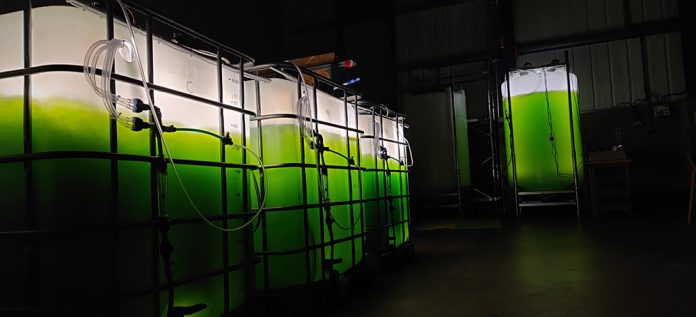All sectors are working to become more sustainable and reduce the impact they have on the environment. For the water industry, though, all this change has to be undertaken while continuing to deliver proper operations, safe drinking water and controlled effluent discharge. It’s a delicate balance that would be an enormous challenge, if it weren’t for I-Phyc’s natural-based approach to removing P from wastewater. But there still may be some perceived risks to adopting this technology, Matt Baldry, Director at I-Phyc, explains
If you were going out to buy a car today, you’d need a good excuse to tell your friends and family if you chose a diesel or petrol vehicle when clearly electric is the right choice for our planet and future generations.
But, internally, your decision would no doubt be influenced by your fears and the risks, be they real or imagined. You might be asking yourself, will the range be adequate, what if I can’t find charging points, etc. It’s understandable and a natural part of the process in the widescale adoption of new technologies. To all but the early adopters, it’s a new technology, so the risks, nuances and considerations are unknown.
As they say, it’s better the devil you know. But, to that point, there are dangers and risks around petrol and diesel engines. We tend to discount the myriad problems relating to breakdowns, maintenance expenses, air quality, GHG emissions, and so on, when we consider petrol and diesel engines because they are expected, and we’ve learned to live with them.
Compare that to the water industry, which is under growing public and political pressure regarding sewage and CSO discharges and the general state of rivers in the UK. People from all walks of life are demanding change; School strikes, Clean Rivers Campaign, Surfers Against Sewage are all gaining media attention. CSOs are a contributing factor of this negative press, even if the logic is flawed, and chemical dosing isn’t helping.
The process has never been risk or consequence free but, in the past, chemical dosing was the answer to the question. Even though chemical dosing still pollutes the effluent with iron, there were no other options. It is also a carbon emitter; Net Zero cannot be achieved with chemical dosing. There’s also the cost and supply of the chemicals themselves, which are increasingly unstable. There’s the cost of maintaining the infrastructure, of employing and training skilled staff, health and safety, and sludge removal.
However, now things are different.
The replacement technology, is Bio-P removal – harnessing the natural power of microalgae to remove P from wastewater as well as ammonia and other contaminants all in a single process.
The by-product of this process is not sludge, but excess algae, which can be reused. The contaminants it removes from wastewater can be harvested and sold on. The technology is modular and does not rely on flow rates, so is suitable for even the smallest plants in the country.
The investment case, however, is complicated. The two systems are not at all like-for-like. Ferric dosing costs include the chemicals themselves, the process including sludge removal and disposal, training, maintenance and cautionary infrastructure like showers in case of a spill. But on top of this is the environmental cost, the carbon cost and the risk of keeping chemicals so near water courses.
With Bio-P removal, the main cost is upfront – the tank and flow system. There are also soft costs like the space they take up, and they do need to be on hard ground so that might be an investment if a particular plant doesn’t have such a space.
The microalgae are self-sustaining, so the only ongoing costs are the modest energy expenditure on the LED lights used to help the microalgae grow, and another energy cost for separating the microalgae from the effluent.
All of these costs are offset by the environmental benefits. There is no iron discharge, it’s a completely chemical and sludge-free process meaning less processing and lorries on the road. All the P it removes and biomass it generates can be sold on.
Microalgae also photosynthesises, so it removes carbon dioxide from the atmosphere. I-Phyc’s Bio-P removal system can lock away 17 tonnes of CO2 per year at 1,000 population equivalent works.
Like electric vehicles, in the long-term, it’s a no-brainer.
To find out more about I-Phyc’s Bio-P removal system, visit, www.i-phyc.com.



